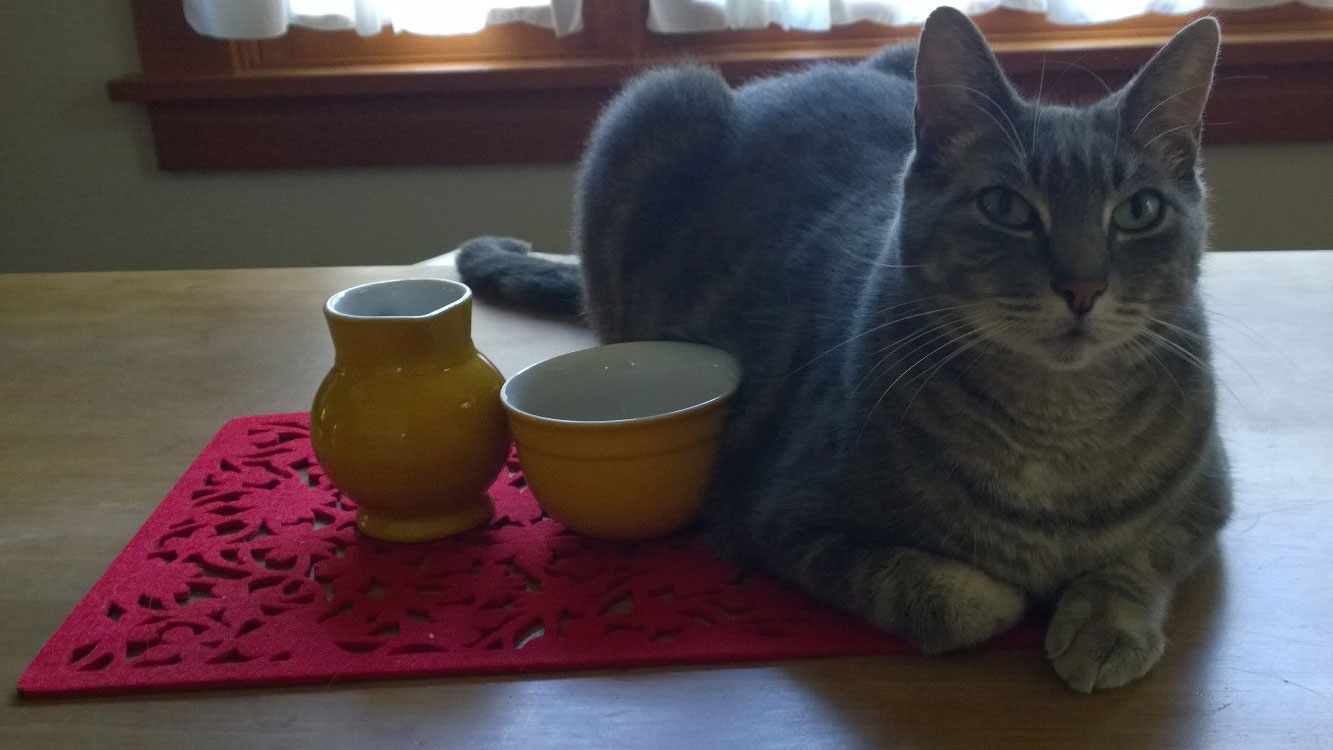Rodents such as mice and rats can carry harmful diseases. Diseases from rodents can spread to people through bite wounds, eating contaminated food or water, or breathing in germs from rodent urine or droppings that are stirred into the air. People can also get diseases from rodent ticks, mites, and fleas.
In Washington, deer mice are the main carriers of a virus that cause hantavirus in people. Hantavirus is a rare, but potentially fatal respiratory disease. Avoid stirring up the dust in rodent-contaminated areas to help prevent exposure to hantavirus.
Don’t Attract Rodents
The best way to prevent a rodent infestation is to remove their sources of food, water, and shelter.
Store pet and people food, bird and lawn/garden seed, and animal feed indoors in containers with tight fitting lids.
Clean up food waste and use thick plastic or metal garbage cans with tight lids.
Keep the area around your home and outbuildings clear of junk and debris.
Trim vegetation and don’t allow plants to grow up alongside your house.
Clean up fallen fruits or nuts from trees and animal waste.
Routinely mix compost piles to encourage rapid decomposition.
Store firewood, lumber, or hay at least 12 inches off the ground and away from your home.
Seal Up Your Home
Seal all gaps and holes into your home or outbuildings. Mice can squeeze through openings as small as a quarter of an inch. Fill small holes with steel wool and caulk. Use lath screen or metal, cement, hardware cloth, or metal sheeting to fix large holes. These materials are available at hardware stores. The following areas should be inspected for gaps:
Inside, under, and behind cabinets and appliances.
Around doors, windows, and the foundation.
Attic, crawl space, dryer, and floor vents.
Around pipes and holes for electrical, plumbing, cable, and gas lines.
Crawl space entry points.
Around the fireplace.
Between the inside floor and wall juncture.
Among roof rafters, gables, and eaves.
Trapping Rodents
Snap Traps
Snap traps are an inexpensive and effective way to control mice and rats. Rats can be very cautious and it may take several days before they approach the traps. Mice are less cautious and you’re likely to catch one or more of them the first night you set the traps. For those who don’t want to do their own rodent trapping or if the rodent infestation is severe, contact a professional pest control company.
Read the instructions carefully before setting the snap trap and follow these tips:
Place snap traps in areas where rodent activity (droppings, nests, chewed materials) is occurring. Don’t place the trap in an area where a pet or young child has access.
Prior to setting the trap, add a small amount of peanut butter onto the bait pan trigger.
After setting the snap trap, carefully place the bait end of the trap along the wall so it forms a “T” with the wall.
Dispose of trapped rodents safely and wash your hands after handling the trap. For how to properly dispose of a dead rodent, see the following Clean Up After Rodents section.
Electronic Traps
Electronic rodent traps, which deliver a high-voltage shock killing the rodent, are a good alternative to the basic snap traps if you’re willing to spend a little more money.
Poison Baits
Poison baits can be problematic because the rodent can die in a spot that can’t be reached (inside a wall), causing a bad smell. Poison baits, if left in accessible areas, could be eaten by pets or attract the attention of young children.
Glue or Live Traps
Glue or live traps aren’t preferred over snap or electronic traps because they keep the rodent alive, which allows them to continue to urinate and defecate. The urine and feces may contain germs which could increase your risk of being exposed to diseases.


Photo: Morf Morford
Clean Up After Rodents
Properly cleaning up rodent-contaminated areas can help prevent hantavirus pulmonary syndrome, a rare, but potentially fatal respiratory disease that people can get after inhaling dust contaminated with rodent urine or droppings. Follow these tips to properly clean up a rodent-contaminated area:
Air out enclosed areas for at least 30 minutes by opening doors and windows. Leave the enclosed area while it’s being aired out.
Don’t vacuum, sweep, or stir up dust in and around rodent contaminated areas – this can cause contaminated dust particles to be inhaled. Note that dust mask may provide some protection against dusts encountered during cleaning, but does not protect against viruses.
Spray and wet down dead rodents, nests, droppings, urine, and other contaminated materials with a 10% bleach solution (1 part bleach to 9 parts water) and let this soak for 10 minutes. Other disinfectant products can be used – follow the label instructions for dilution and disinfection time.
Wearing rubber gloves, wipe up the contaminated materials with paper towels, rags, or mops and place waste into a double plastic bag and into the garbage.
Before removing gloves, wash or disinfect them.
Wash hands with soap and warm water after removing gloves (or use alcohol-based hand sanitizer if soap and water is not available).
Carpets, Furniture, Clothing, and Non-washables: Shampoo carpets, rugs, and upholstered furniture with a commercial disinfectant or use a commercial-grade steam cleaner. Place contaminated clothing, bedding, and stuffed animals into the washing machine with hot water and detergent. Use the high heat setting on the dryer or hang laundry to air dry in the sun. For items such as books or other non-washables that can’t be cleaned with a liquid disinfectant or thrown away, leave them outside in the sunlight for several hours, or in an indoor area free of rodents for about a week. After that time, wipe the item down the best you can with a moistened cloth with disinfectant.
Heating and Cooling Ventilation Air Ducts: When there is evidence that rodents have access to heating and cooling ventilation systems, it’s best to contact a professional pest control company to remove them. Companies specializing in duct cleaning are familiar with the particular problems and risks associated with rodent infestations in ventilation systems. EPA’s duct cleaning page offers more information about eliminating rodent infestations in ventilation systems and the companies that perform this service.
Vehicles: When preparing to inspect and clean up after rodents nesting in cars, trucks, campers, and other vehicles, follow CDC Interim Guidance for Cleaning and Disinfection of Vehicles with Rodent Infestations.
Heavy Rodent Infestations
Special precautions should be used for cleaning homes or buildings with heavy rodent infestations. Homeowners should consider hiring a professional company to clean up heavily contaminated areas.
Workers who have concerns about cleaning up rodent-contaminated areas should contact their nearest Labor and Industries service center. People involved in cleaning up heavy rodent infestations should wear the following protective equipment:
Coveralls (disposable, if possible).
Rubber boots or disposable shoe covers.
Rubber gloves.
Protective goggles.
Appropriate respiratory protection device, such as a half-mask air-purifying (or negative-pressure) respirator with a high-efficiency particulate air (HEPA) filter or a powered air-purifying respirator (PAPR) with HEPA filters. Follow local and state requirements regarding pulmonary function and fit testing before beginning any work requiring the use of a respirator.
Personal protective equipment should be decontaminated upon removal at the end of the day. Potentially infective waste material (including respirator filters) should be double bagged in plastic, labeled as infectious (if it is to be transported) and disposed of in accordance with local requirements for infectious waste.
– Washington State Department of Health








